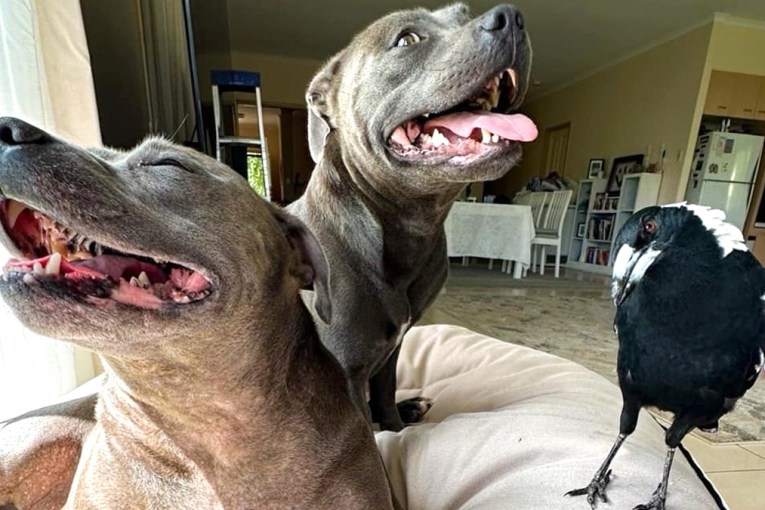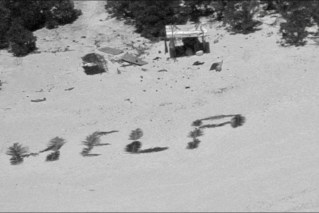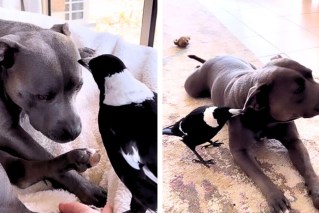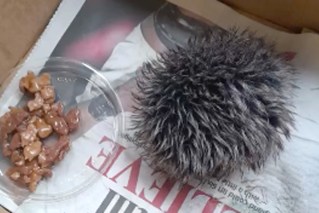Museum’s invertebrate zookeeper on a mission to spin spiders in a positive light
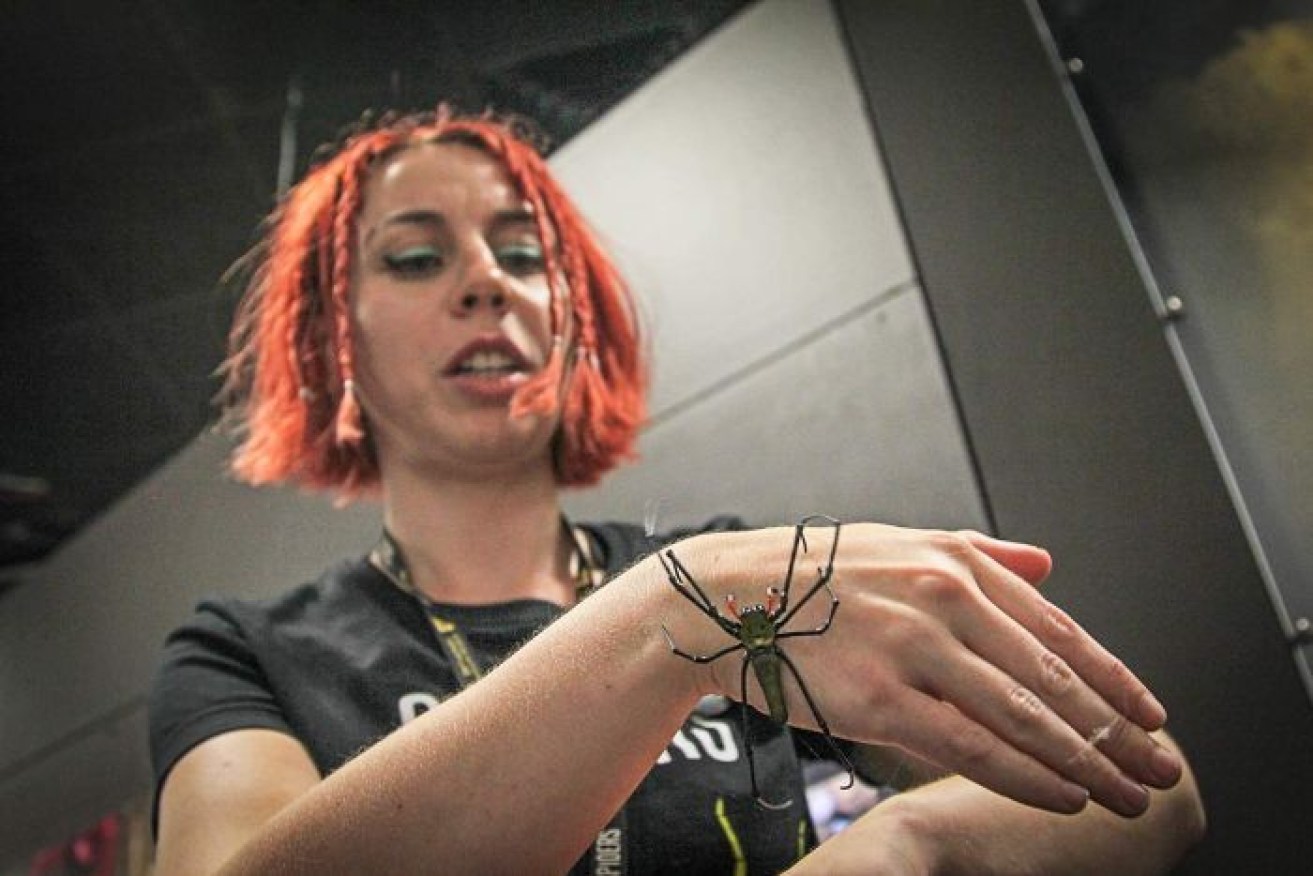
Caitlin Henderson keeps calm as she handles a large, long-legged spider. Photo: ABC
Caitlin Henderson has harboured a long fascination with spiders – she even kept them as pets as a child.
Now she’s in Darwin to keep watch on the cluster of spiders that have taken up residence at the Museum and Art Gallery of the Northern Territory (MAGNT) .
She’s keen to spin a new reputation for the eight-legged critters which are part of an interactive exhibition.
“It’s this kind of vendetta you go on where you’ve got to get the word out there because no-one else is doing that.”

Friend or foe? A large golden silk orb weaver crawls across Caitlin’s hand. Photo: ABC
What kind of arachnophobe are you?
Ms Henderson has spent so much time researching spiders – and defending them – that she categorises the people who fear them into two broad types.
“There are the ones that are a bit repulsed by them; they’ve been told their whole life that they’re disgusting and dangerous,” she said.
“So you start by just showing them something different, something they didn’t expect, and then they get interested and they want to find out more.”
The second type – severe arachnophobes – pose more of an uphill battle, she said.
“You can’t really get through that with just, ‘here’s a spider, let’s look at it’.
“But that’s something that people become more interested in getting over if they do see that there’s a good side to spiders.”
Spiders on a plane
In October, MAGNT put the call out for someone to professionally care for a colony of live spiders for its display.
The job ad went mildly viral.
Duties: day-to-day care of all live spiders, maintaining food and educating visitors.

Caitlin’s job is to tend to about 60 live spiders over the course of the exhibition. Photo: ABC
More than 50 spiders were flown to Darwin in the luggage compartment of a plane, unbeknown to passengers in the cabin above, while their environments were freighted by road.
The invertebrate zookeeper needed to ensure those on display, and their understudies, were in good shape.
“Not all of them will be on display in the exhibition,” Richard Wilan, the museum’s senior curator of molluscs, explained in October.
“We’ll have at least one [of each species] on display, but for most of them there’s one or two understudies in case the first one suddenly meets a sad end.”
The role would also require meticulous attention to the spiders’ health, right down to breeding the insects they would eat.
“So all of the different spiders, and I think we’ve got a total of around 60 spiders coming, will need care and attention – even on Christmas Day,” Dr Wilan said.
Myths, busted
Ms Henderson landed the job, and over the next few months she’ll pay meticulous attention to the cluster’s wellbeing.
What their posture, movement and appearance says about their health she has down to a tee.

Caitlin Henderson grew up in a family of spider lovers. Photo: ABC
She will also attempt to reform their image in the eyes of a cautious public and bust a handful of common myths to boot.
Daddy-long-legs spiders are the most venomous in the world – myth.
White-tailed spider bites cause necrosis – myth.
“The idea that white tails cause necrosis or any kind of horrible bacterial infection came about from a misdiagnosis in the ’80s and we’re still trying to repair that damage,” she said.
So why are these reputations so enduring?
“We are very attached to our image, I think, of being the country with everything that will kill you,” Ms Henderson said.
“I don’t know if we’ll ever get past that idea that these are all deadly creatures that must die, but you can definitely see how these myths travel much faster than the very boring truth of them just being regular animals.”

The new exhibition displays live spiders and about 200 additional specimens. Photo: ABC
Despite arranging for the exhibition to travel to Darwin, even MAGNT’s director Marcus Schutenko harbours a fear of spiders.
“It’s good to meet people who just don’t see spiders as something to be fearful of at all and working alongside them,” he said.
“I think anybody coming into this exhibition, the way it’s been set up, is I think any arachnophobic tendencies someone has are lessened.
“We’re not trying to get people fearful of them – in fact we’re trying to do the opposite.”
So far, for him at least, it’s worked.
Spiders runs at MAGNT until April 28.
-ABC
